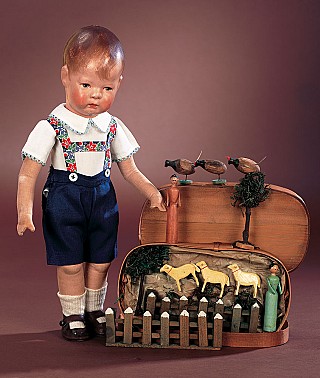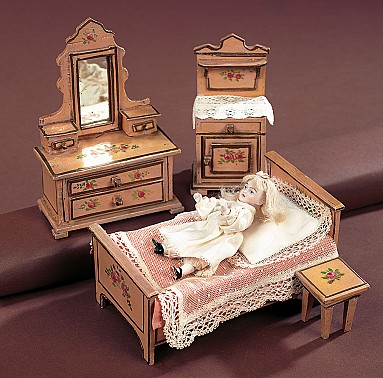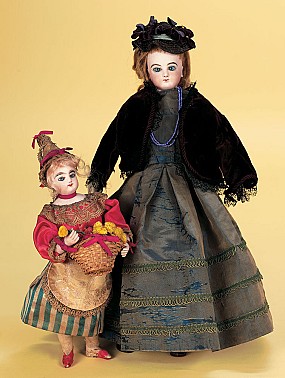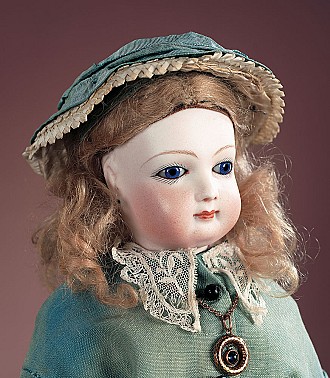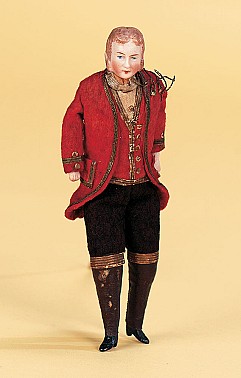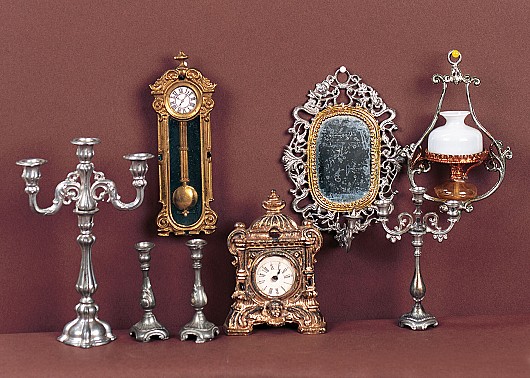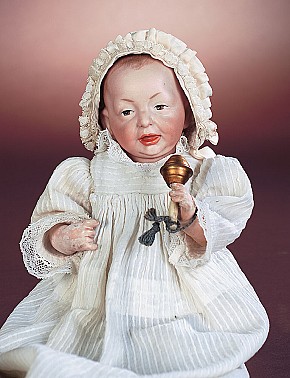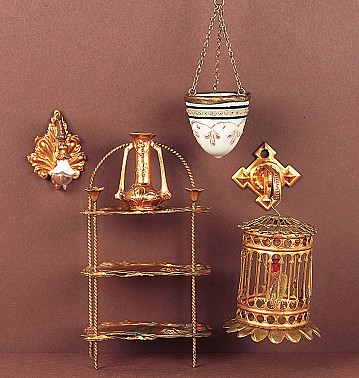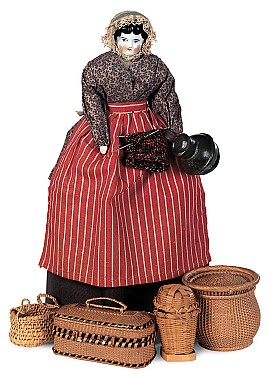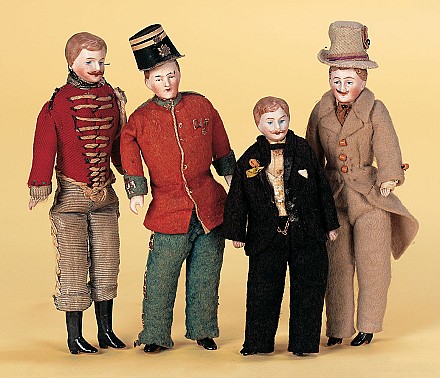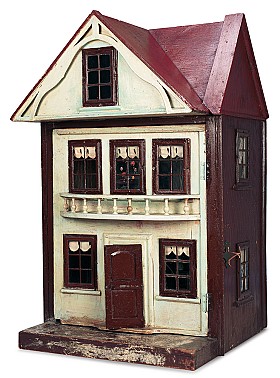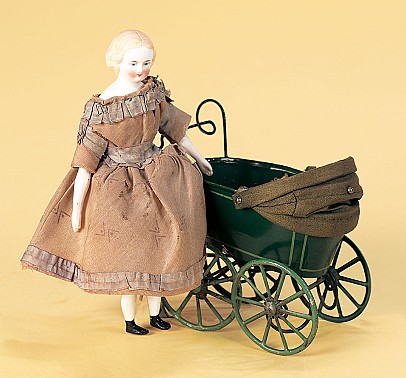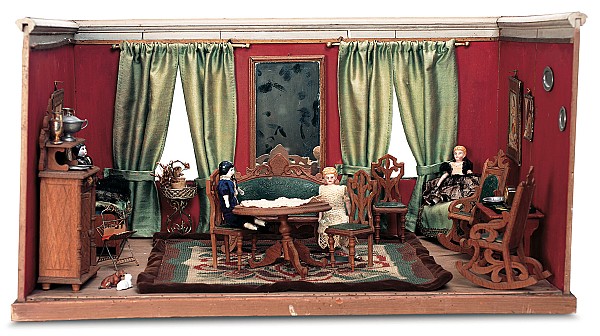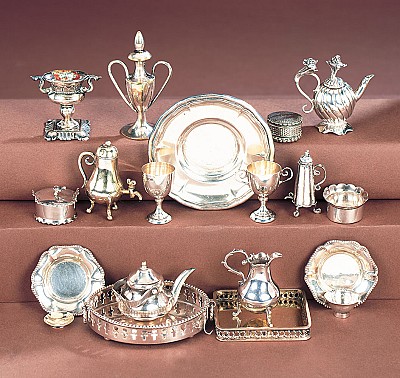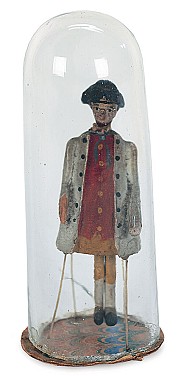A Large and Well-furnished Three-Story House by Gottschalk
Lot #137
40"h x 38"l. x 15"d. A large wooden house, painted cream with green trim, has an outset center that extends through both 1st and 2nd floors and terminates in a shaped arch at the attic roof that shades the set-back covered porch and is centered by small dormer windows on either side. The front opens in the center to reveal the house interior. There are cut windows at the front, an unusual fancy crest over the 1st floor portico and a four-angle red roof over the entire house. The left side of the house front has set-back porches with classic Gottschalk style lattice work and balcony railing, and there is a door into the house on each floor. The remainder of the front windows have fixed wooden shutters with painted designs, and there are metal hooks for window boxes on each window. The painted faux-windows on each side of the house are well executed. There are small hinged doors at each side of the attic, and the attic features three rooms. There are 5 rooms on the 1st and 2nd floor plus an entry foyer with hall closet and staircase to 2nd floor. The two center rooms have outset niches with windows at both the front and back of the house. The furnishings include marble hall table,4-piece woven rattan set, fancy oak armoire, grandfather clock, maple table with 5 chairs, maple furniture including rocking chair, sewing stand with tiny scissors, and 2 sofas (one marked by maker),gilded hall mirror, cast iron stove, wooden kitchen table with three chairs, paint-decorated kitchen cupboard with matching canisters, copper and brass parlor stove, 3 carpets, Biedermeier furniture including 3 balloon back chairs,2 mini chairs, mirrored armoire, secretaire, and 2 sewing tables. Accessories include fireplace screen with decorative threadwork,2 porcelain porch pots with feather plants, 2 hanging fixtures, pewter dishes, blue-green bucket, tin lantern, copper scuttle, glass blown bottles, Gottschalk plant pedestal, bisque bust on wooden pedestal, bone sewing basket, tiny woven basket, horn mirror, miniature Scandavian paintings dated 1901, and other various dishes. There are 9 antique bisque or china doll house dolls with antique costumes. The house is in original finish, original front steps included; there is typical wear and flaking to exterior finish, original wall paper and floors, original electrical ceiling fixture in each ceiling. The house appeared in the 1912 Catalog of Moritz Gottshalk (see page 169 of Cieslik reprint of Gottschalk catalogs) and was considered a deluxe model. Circa 1912, Gottschalk.
































































